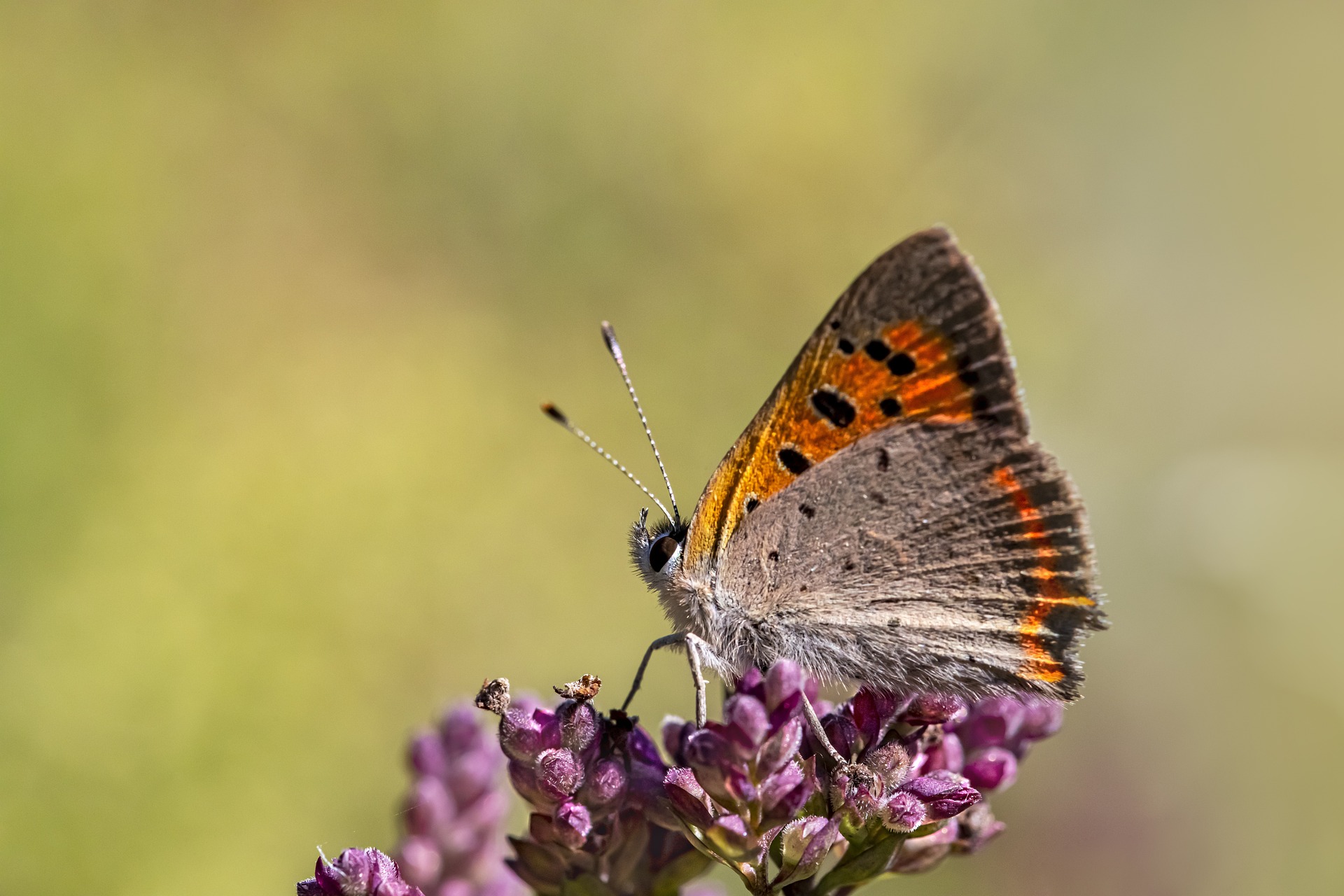The Common Copper (Lycaena phlaeas) is a small and vibrant butterfly species found across Europe, Asia, and North America. Here’s a brief overview:
- Appearance: The Common Copper butterfly is known for its striking coloration. The upper side of its wings is a bright orange-red with dark brown or black markings along the edges and veins, giving it a distinctive appearance. The undersides of the wings are a mottled gray-brown with orange spots and black markings, providing camouflage when the butterfly rests with its wings closed.
- Size: Common Coppers are relatively small butterflies, with a wingspan typically ranging from 22 to 32 millimeters.
- Habitat: These butterflies inhabit a variety of open habitats, including meadows, grasslands, heathlands, and coastal dunes. They are often found in areas with abundant flowering plants, which provide nectar for adults and food sources for caterpillars.
- Life Cycle: The life cycle of the Common Copper consists of four stages: egg, larva (caterpillar), pupa (chrysalis), and adult butterfly. The females lay eggs on the leaves of various host plants, including sorrels (Rumex spp.) and docks (Rumex spp.). The caterpillars feed on the leaves of these plants before pupating and emerging as adult butterflies.
- Behavior: Common Coppers are active during the warmer months of the year and can often be seen basking in the sun or feeding on flowers. They have a fluttery flight pattern and are relatively agile, despite their small size.
- Conservation: While Common Coppers are not considered globally threatened, they may face habitat loss and fragmentation due to agricultural intensification, urbanization, and changes in land management practices. Conservation efforts aimed at preserving and restoring their natural habitats are important for ensuring the continued survival of Common Copper populations.
Overall, the Common Copper is a beautiful and fascinating butterfly species appreciated for its vibrant coloration and ecological role as a pollinator. Observing these butterflies in their natural habitat can provide a delightful experience and an opportunity to appreciate the wonders of the natural world.
Visited 273 times, 1 visit(s) today
Views: 461
Subscribe to the newsletter:
